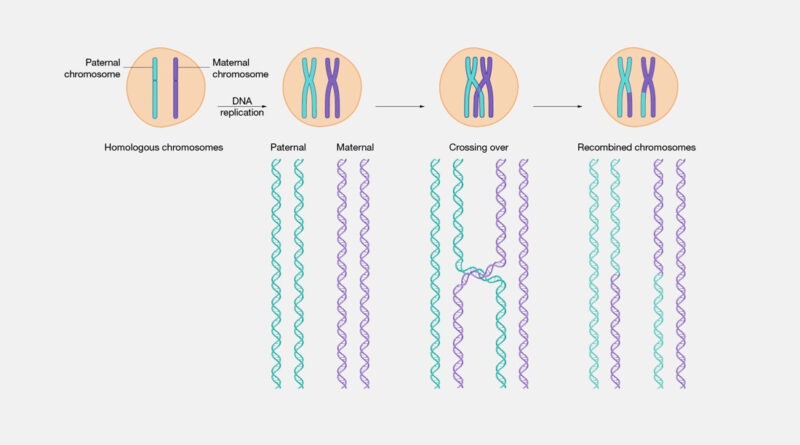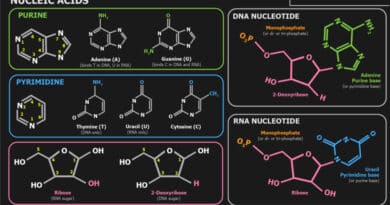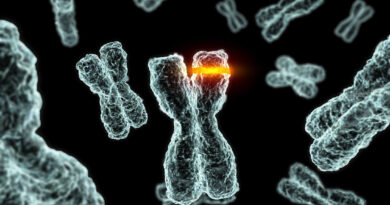Genetic Recombination: The Mechanism of Diversity
Genetic recombination is a fundamental process in molecular biology that enhances genetic diversity within a population. It is the mechanism through which DNA sequences are shuffled to produce new combinations of alleles, the different forms of a gene. This process occurs naturally during meiosis in sexually reproducing organisms and can also be induced artificially in the laboratory. Understanding genetic recombination is crucial for fields ranging from evolutionary biology to biotechnology.
The Basics of Genetic Recombination
Genetic recombination occurs primarily during meiosis, the type of cell division that produces gametes—sperm and egg cells in animals, or pollen and ovules in plants. During meiosis, homologous chromosomes—pairs of chromosomes containing the same genes but possibly different alleles—line up closely and exchange segments of DNA. This exchange is facilitated by a process known as crossing over.
Crossing Over
Crossing over occurs during prophase I of meiosis when homologous chromosomes pair up in a process called synapsis. Enzymes induce breaks in the DNA molecules of each chromosome, and segments of DNA are swapped between the homologous chromosomes. The points where the chromosomes break and rejoin are called chiasmata. This exchange of genetic material results in new combinations of alleles on each chromosome, contributing to the genetic variability of the offspring.
Importance of Genetic Recombination
1. Genetic Diversity: Recombination increases genetic diversity within a population, which is essential for evolution. It allows for new traits to emerge, some of which may provide a selective advantage in changing environments.
2. Repair of Damaged DNA: Recombination also plays a critical role in DNA repair. Homologous recombination, a specific type of recombination, helps repair harmful breaks in DNA strands, maintaining genome stability.
3. Adaptation and Evolution: By creating new allele combinations, recombination accelerates adaptation and evolution. It allows for beneficial mutations to spread through a population more rapidly than they would through mutation alone.
Mechanisms of Genetic Recombination
Apart from meiotic recombination, other mechanisms contribute to genetic recombination:
1. Site-Specific Recombination: This occurs when recombination happens at specific sequences in the DNA. It is a crucial mechanism in prokaryotes for integrating viral DNA into the host genome, a process known as lysogeny.
2. Illegitimate Recombination: This type of recombination does not require extensive homology between the sequences involved. It often results in genetic rearrangements and can lead to mutations, contributing to genetic diversity and evolution.
3. Gene Conversion: During recombination, sometimes one allele is converted to another. This non-reciprocal transfer of genetic material can lead to changes in allele frequencies in a population over time.
Genetic Recombination in Biotechnology
The principles of genetic recombination are harnessed in biotechnology for various applications:
1. Genetic Engineering: Recombinant DNA technology involves combining DNA from different sources to create genetically modified organisms (GMOs). This technology is used to produce insulin, growth hormones, and other important biopharmaceuticals.
2. Gene Therapy: Recombination techniques are employed in gene therapy to replace defective genes with functional ones, offering potential cures for genetic disorders.
3. Molecular Cloning: Scientists use recombination to clone genes, allowing for the study and manipulation of specific genes in the laboratory.
4. Plant and Animal Breeding: Recombination is used in selective breeding programs to produce crops and livestock with desirable traits, such as disease resistance or increased productivity.
Conclusion
Genetic recombination is a powerful natural process that enhances genetic variation and drives evolution. It is not only a cornerstone of biological diversity but also a critical tool in modern biotechnology. Understanding and manipulating recombination can lead to advancements in medicine, agriculture, and numerous other fields, highlighting its importance in both nature and technology. As research in genetic recombination continues to evolve, it holds the promise of uncovering new insights into the complexity of life and the potential for innovative solutions to global challenges.



